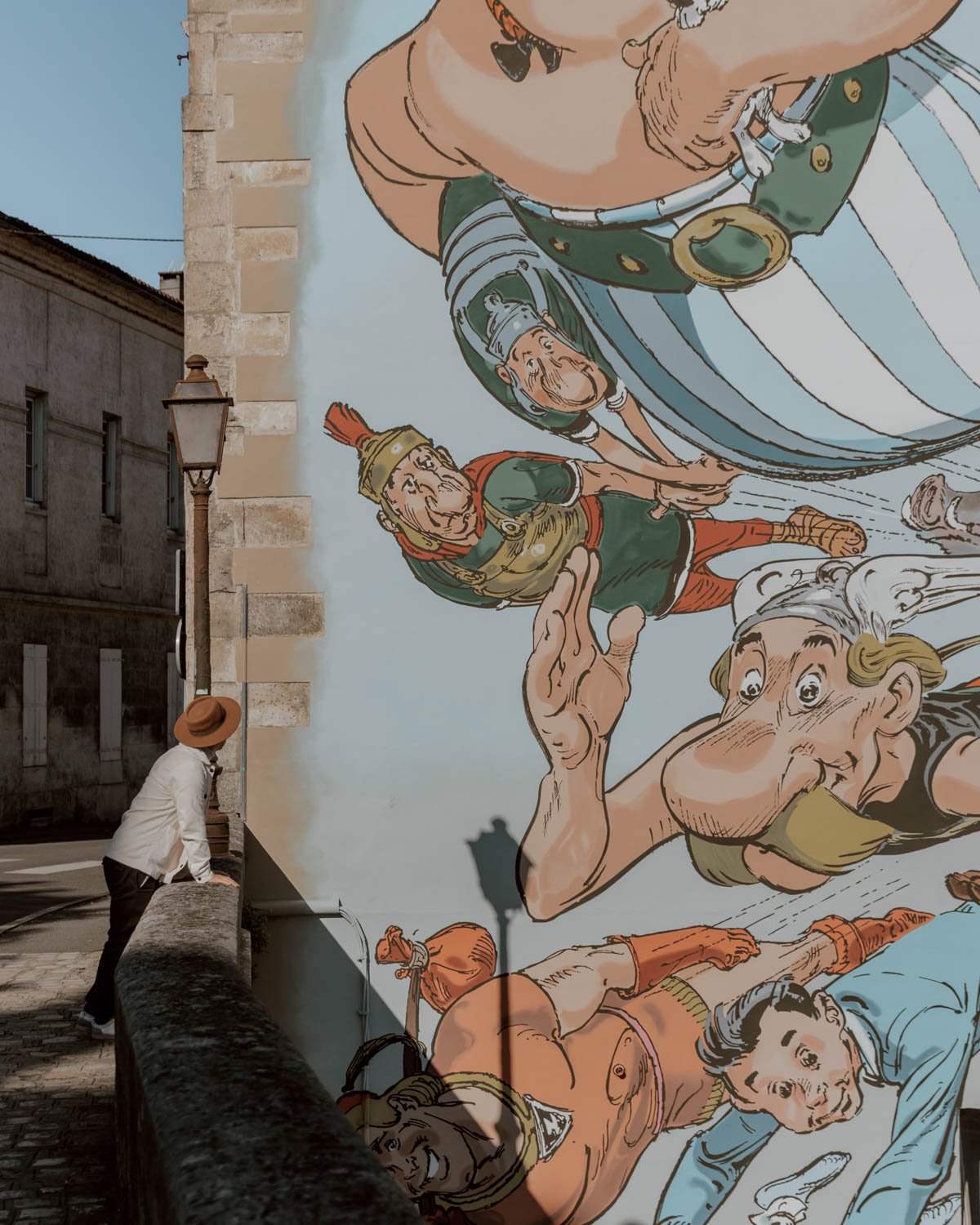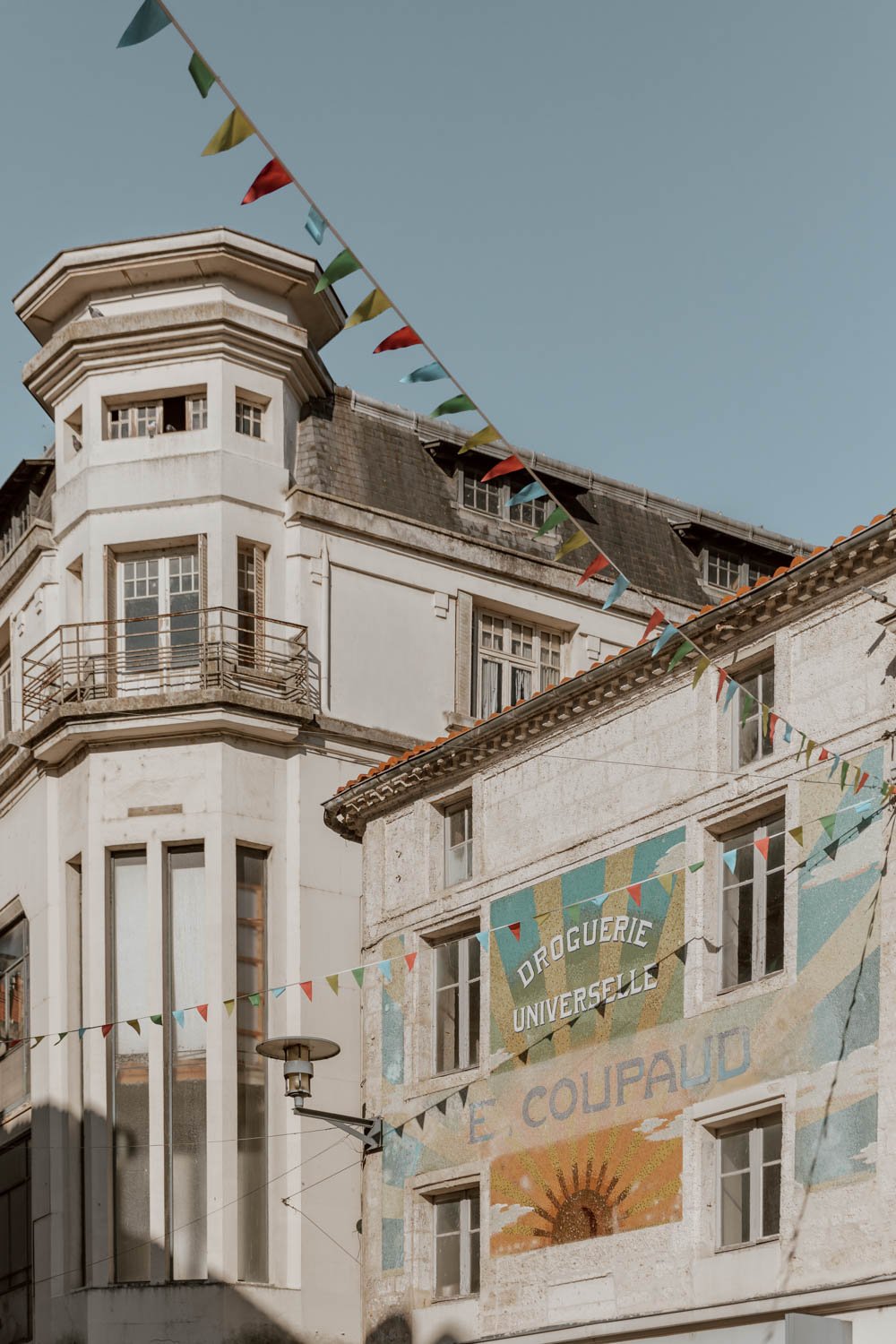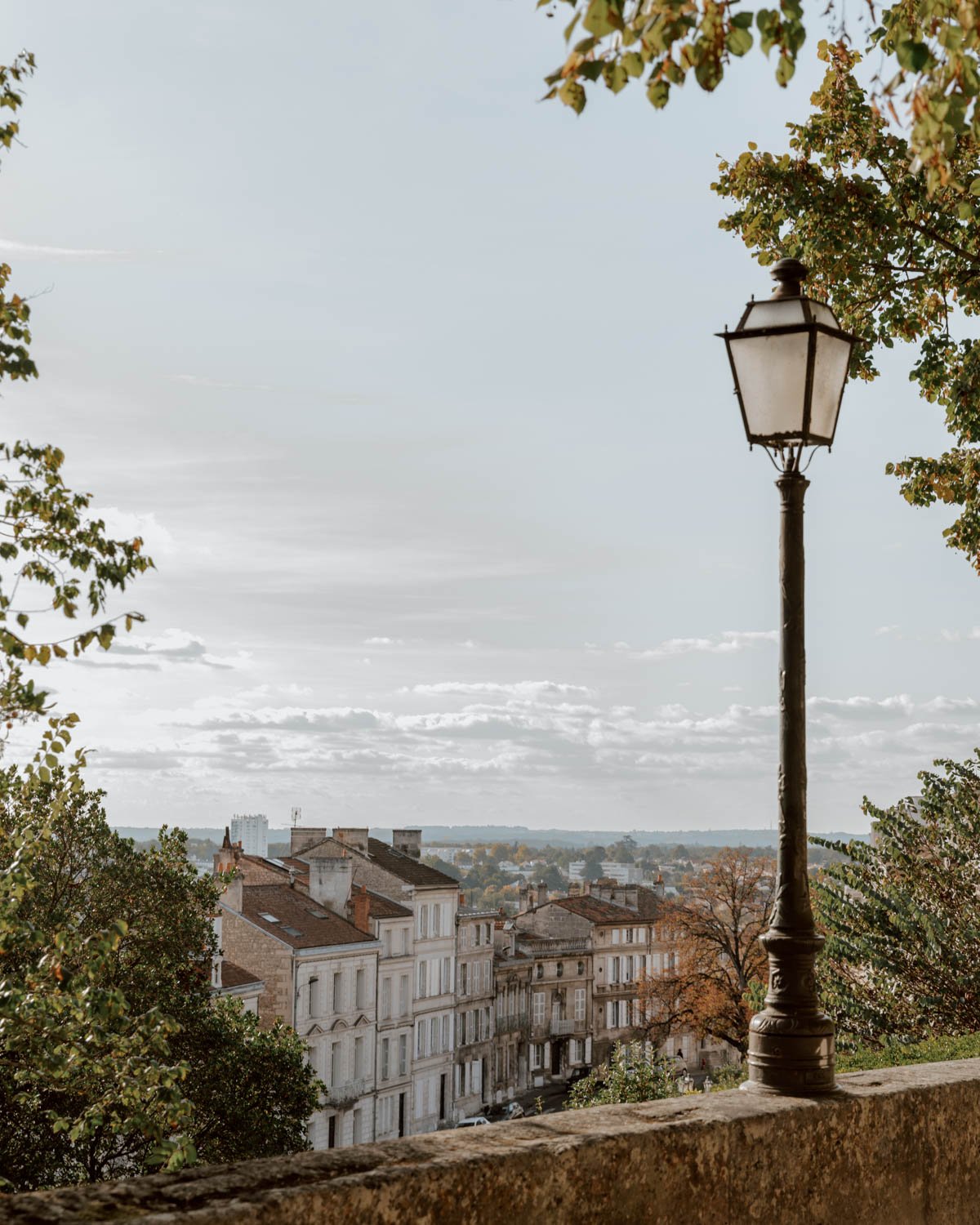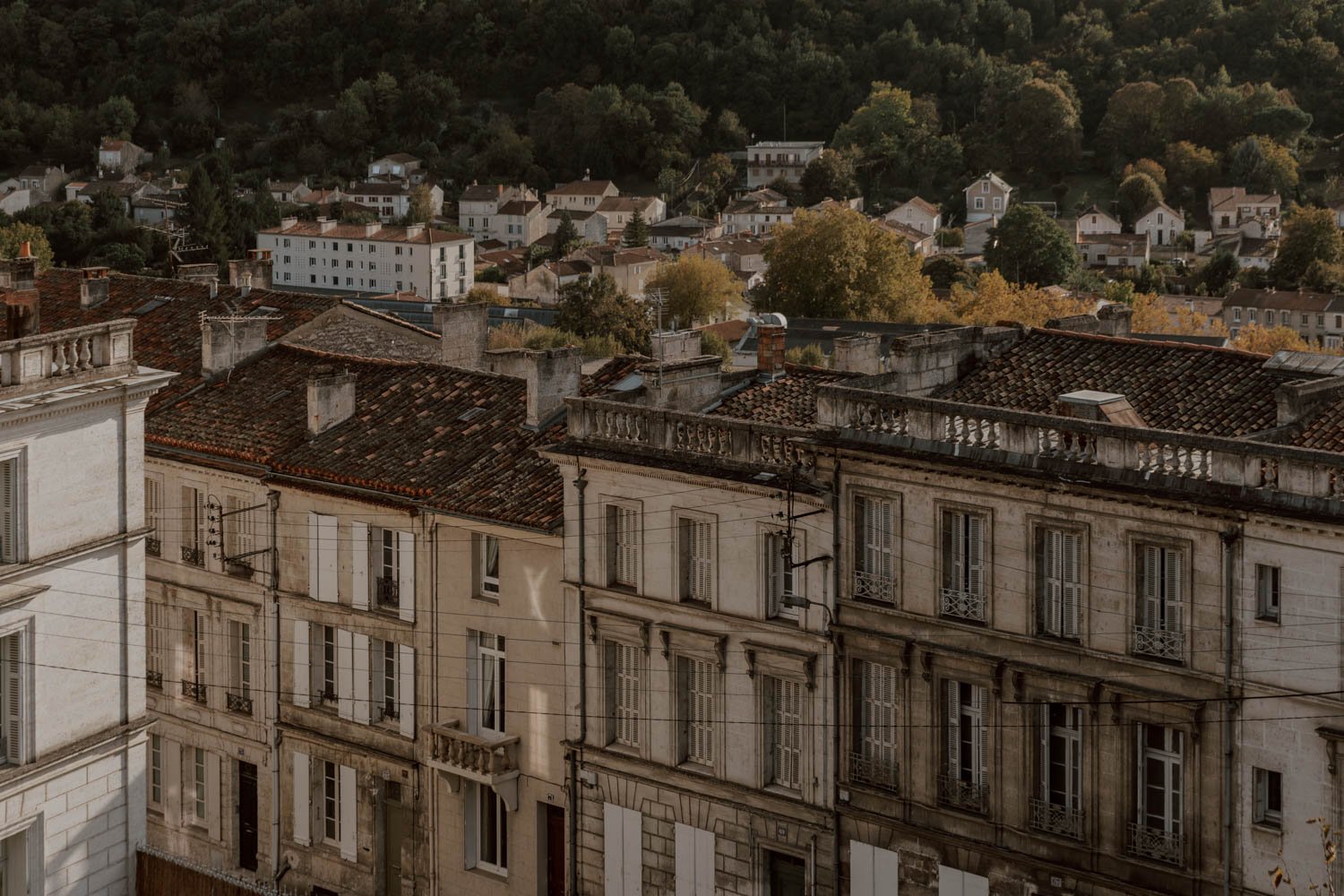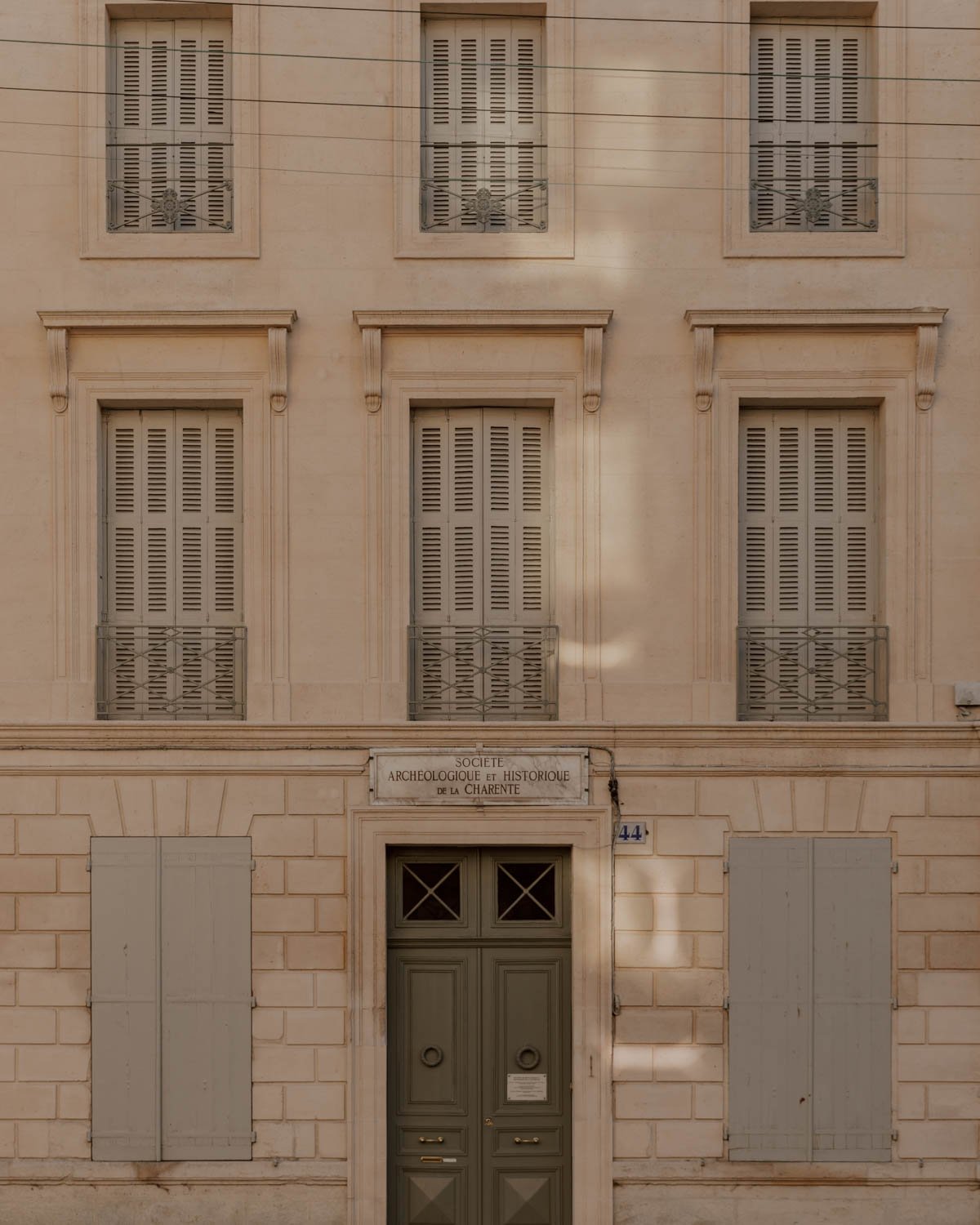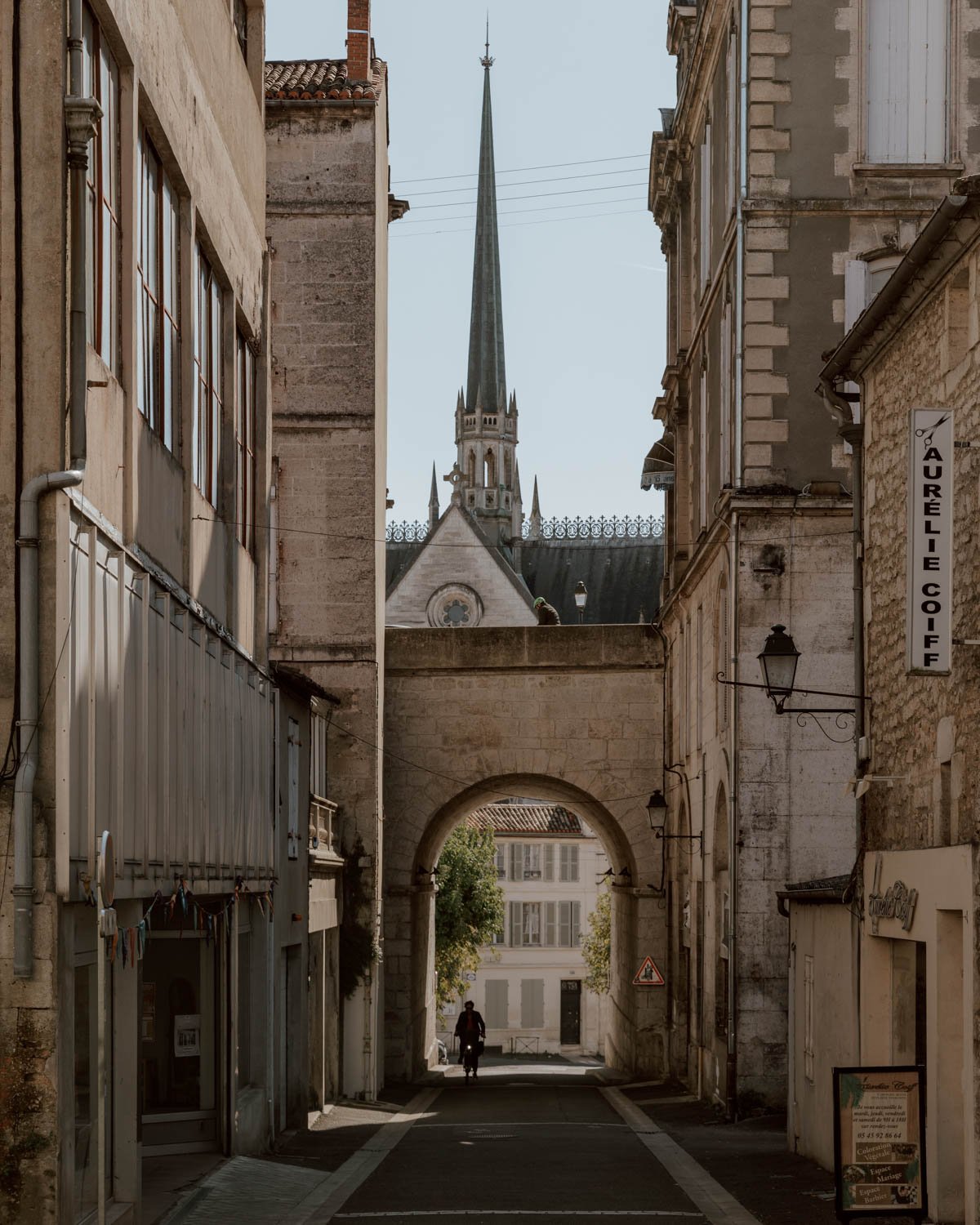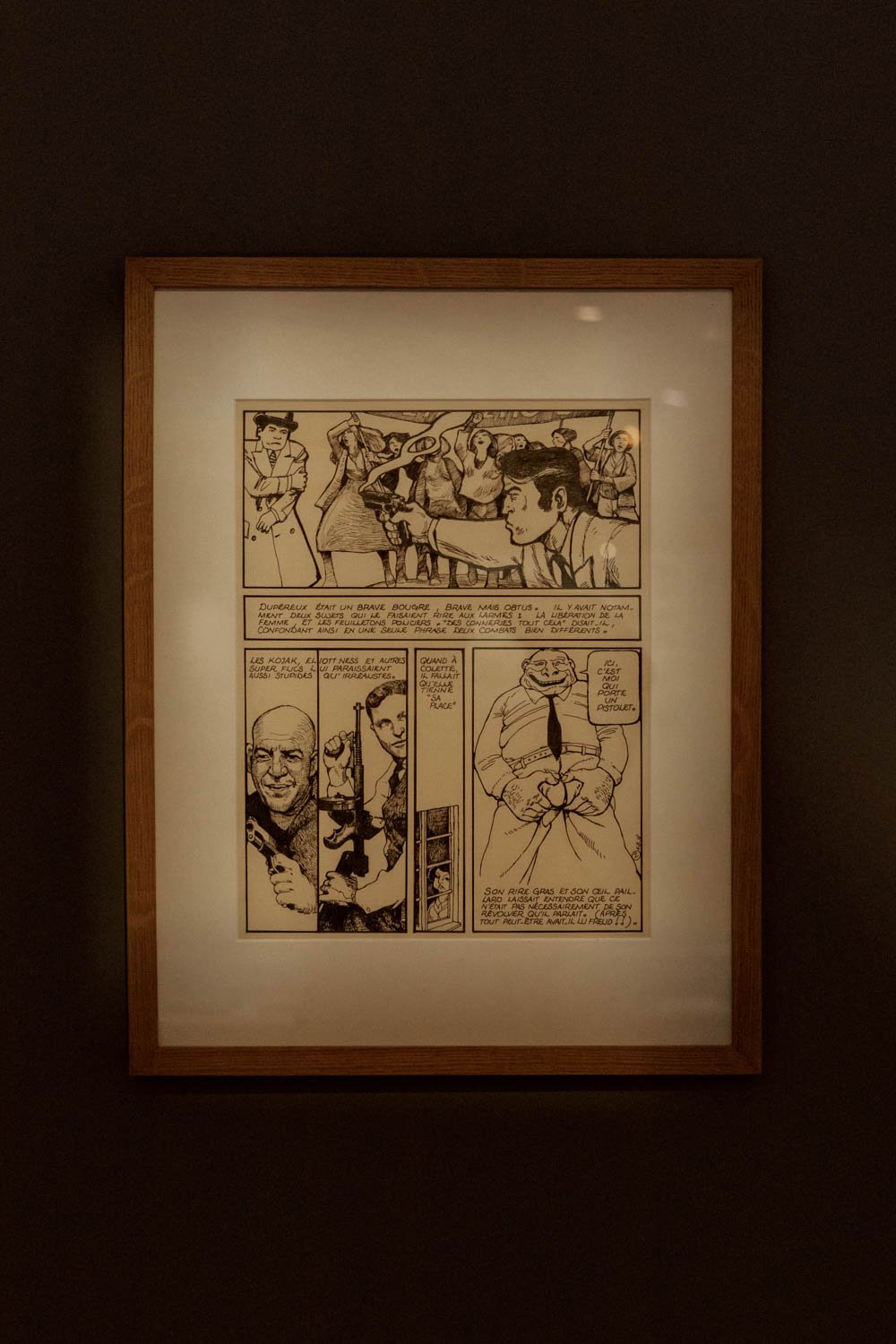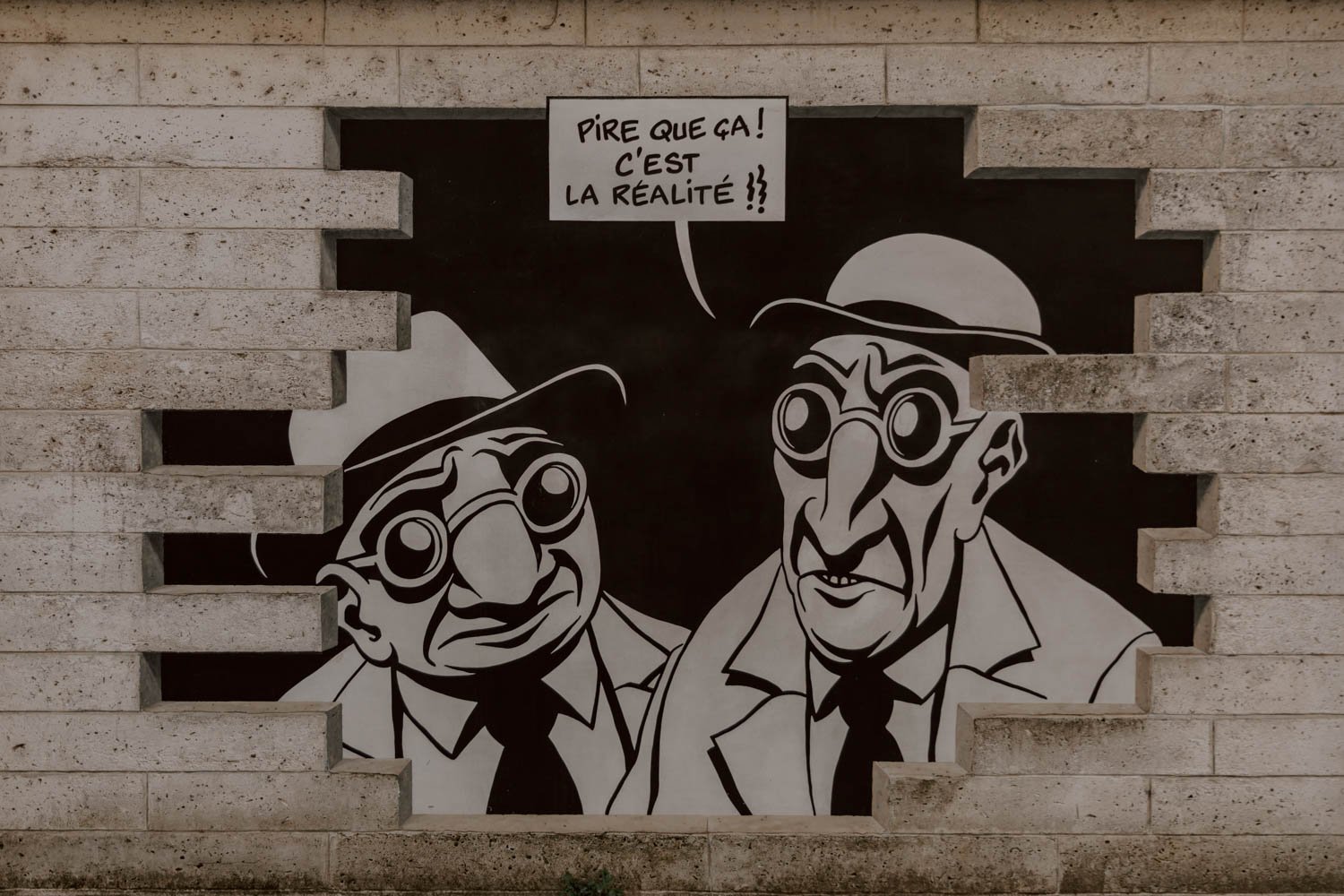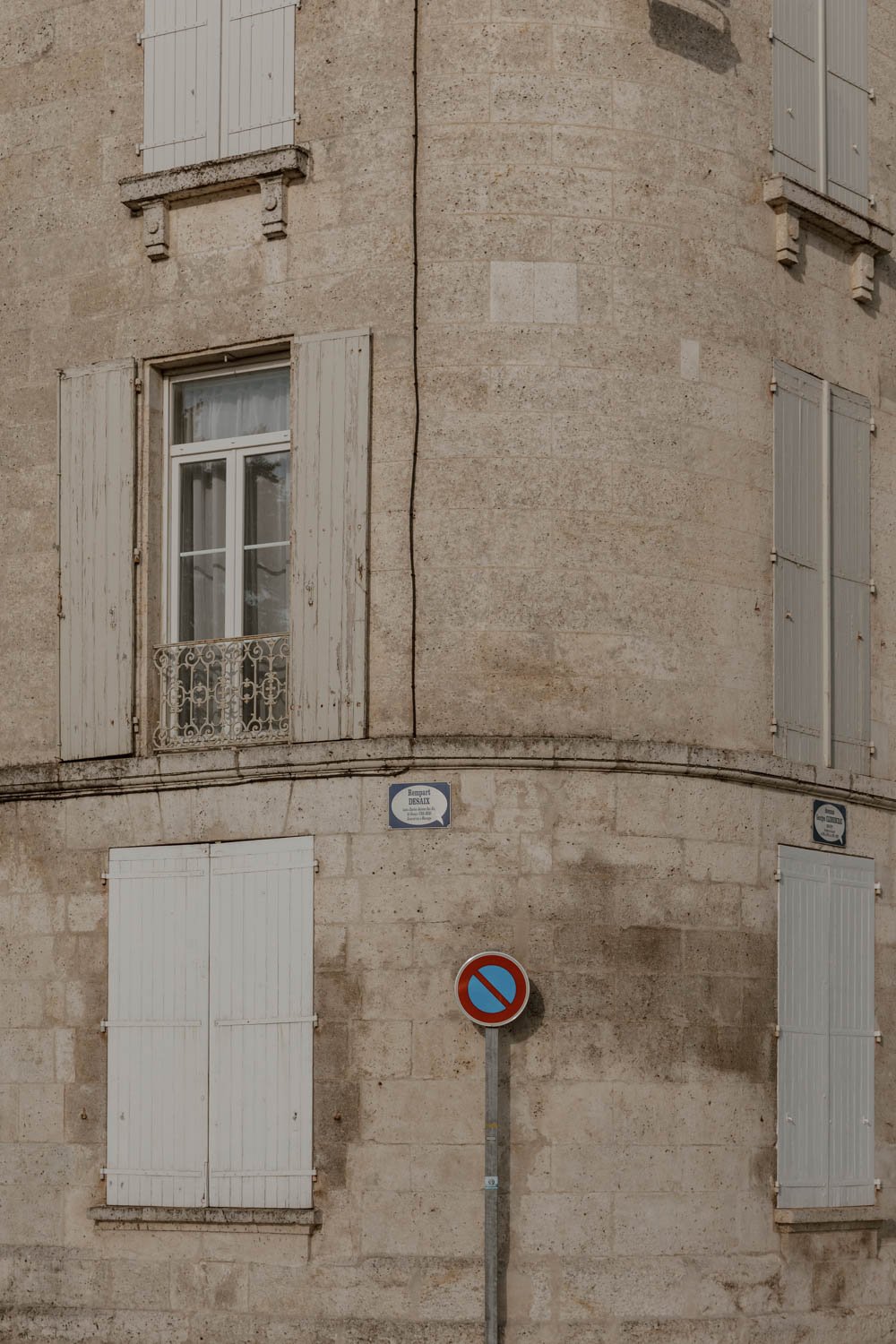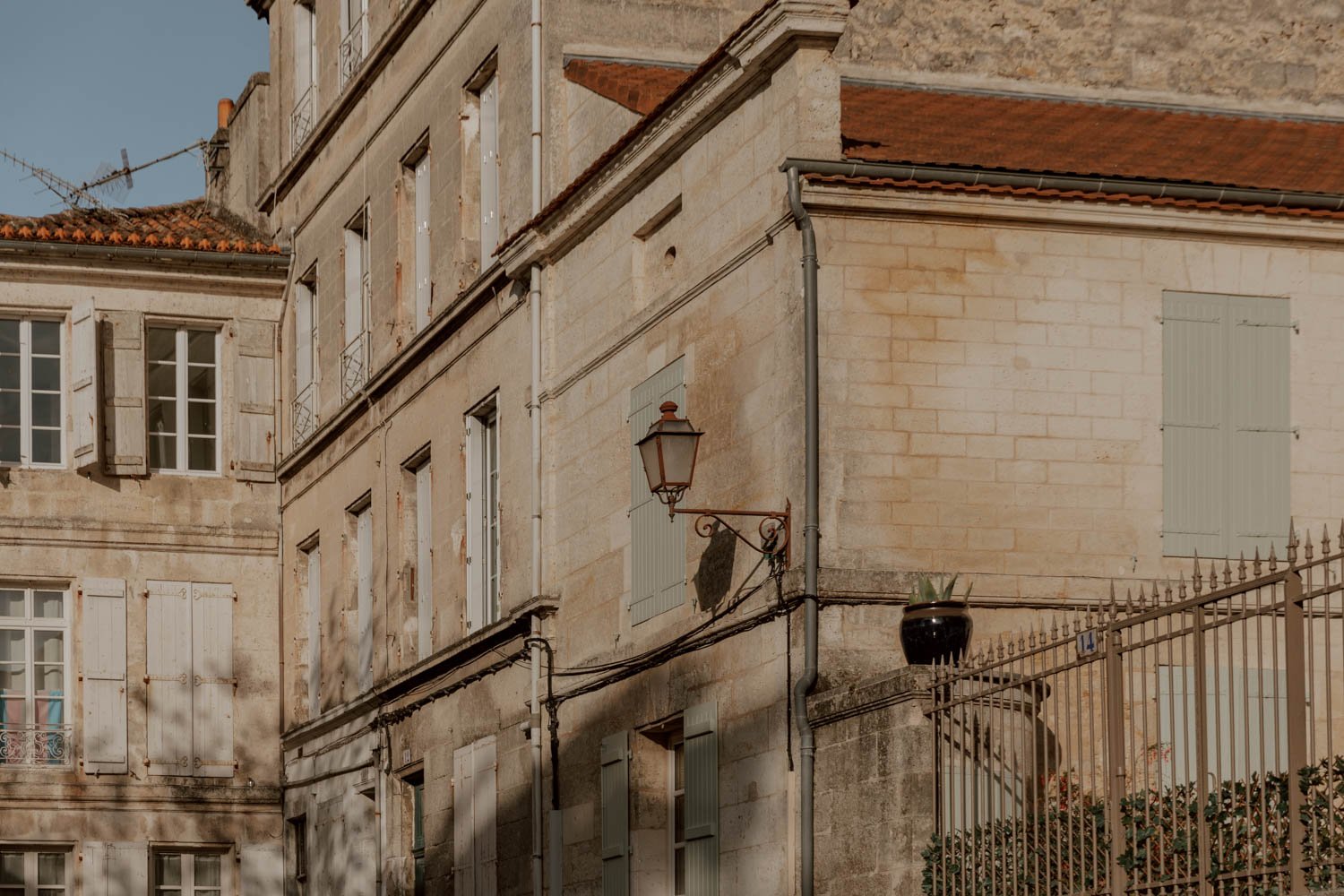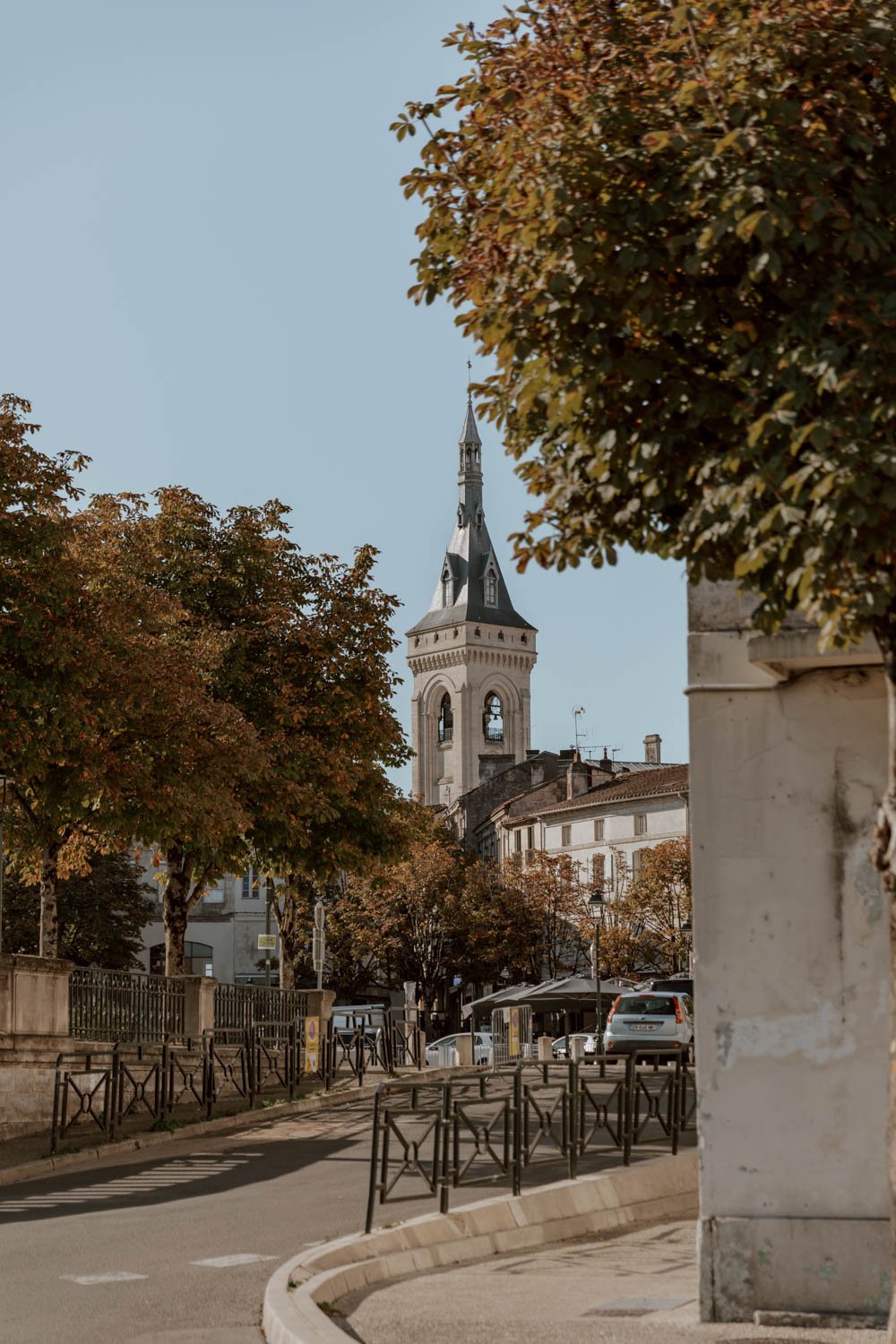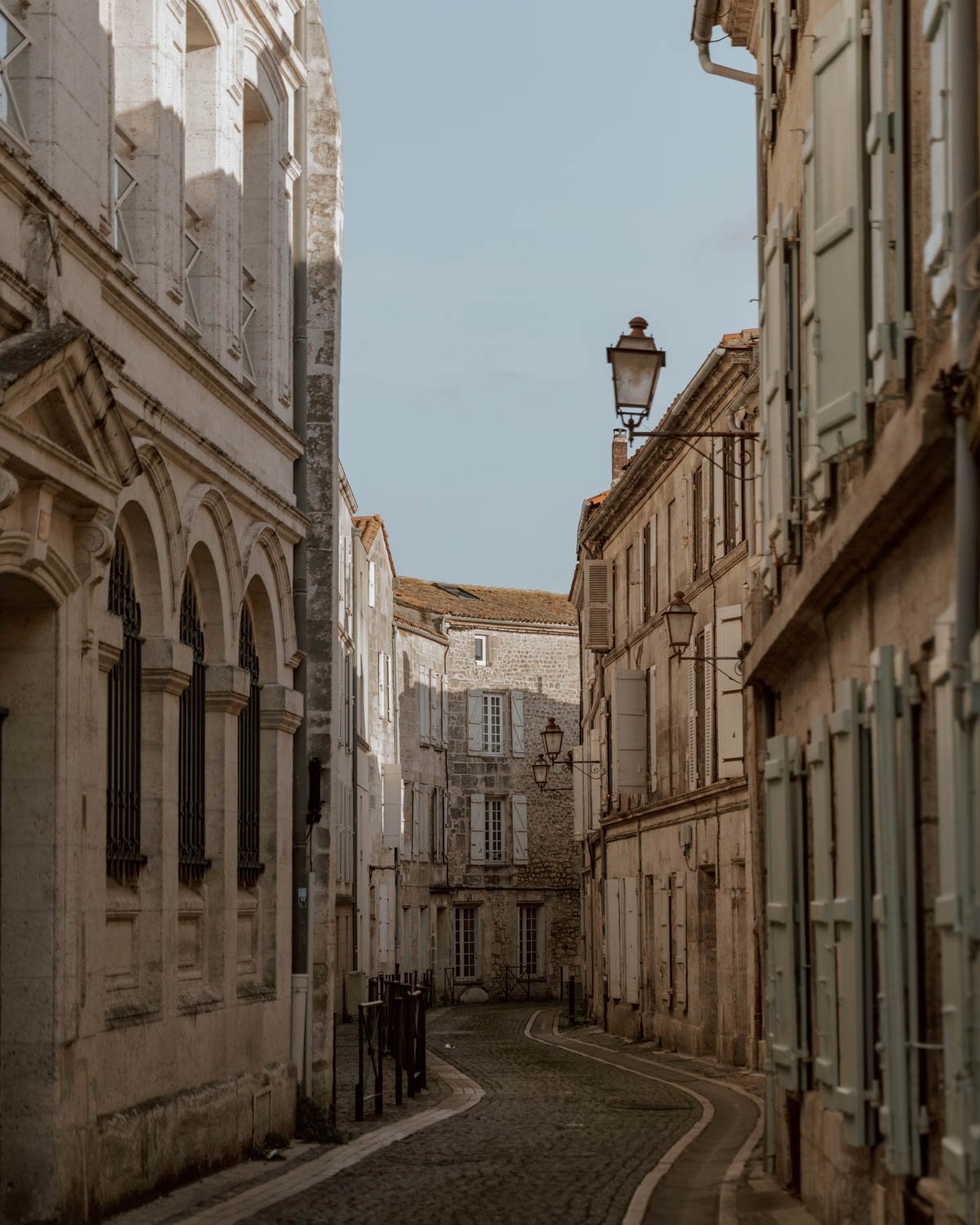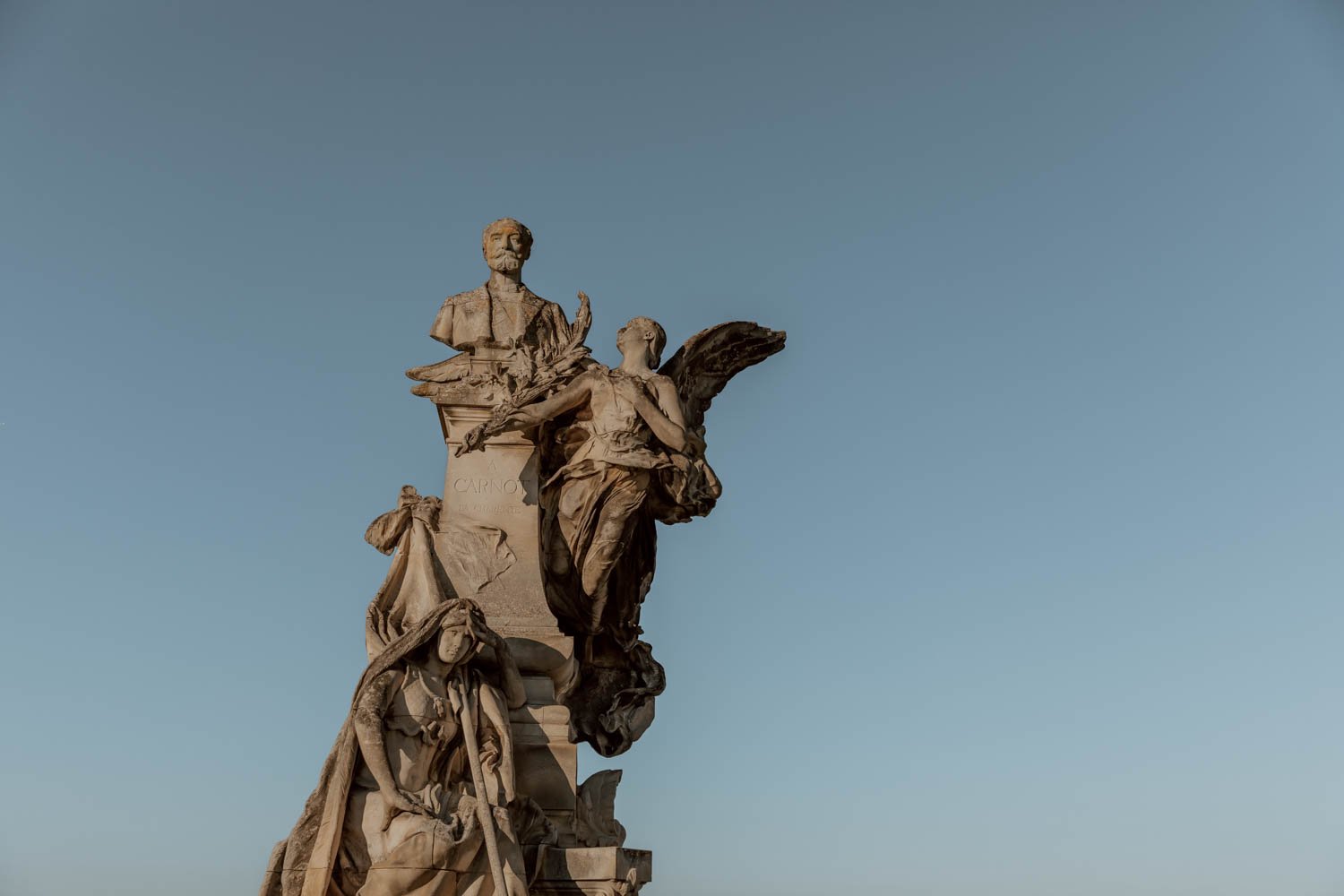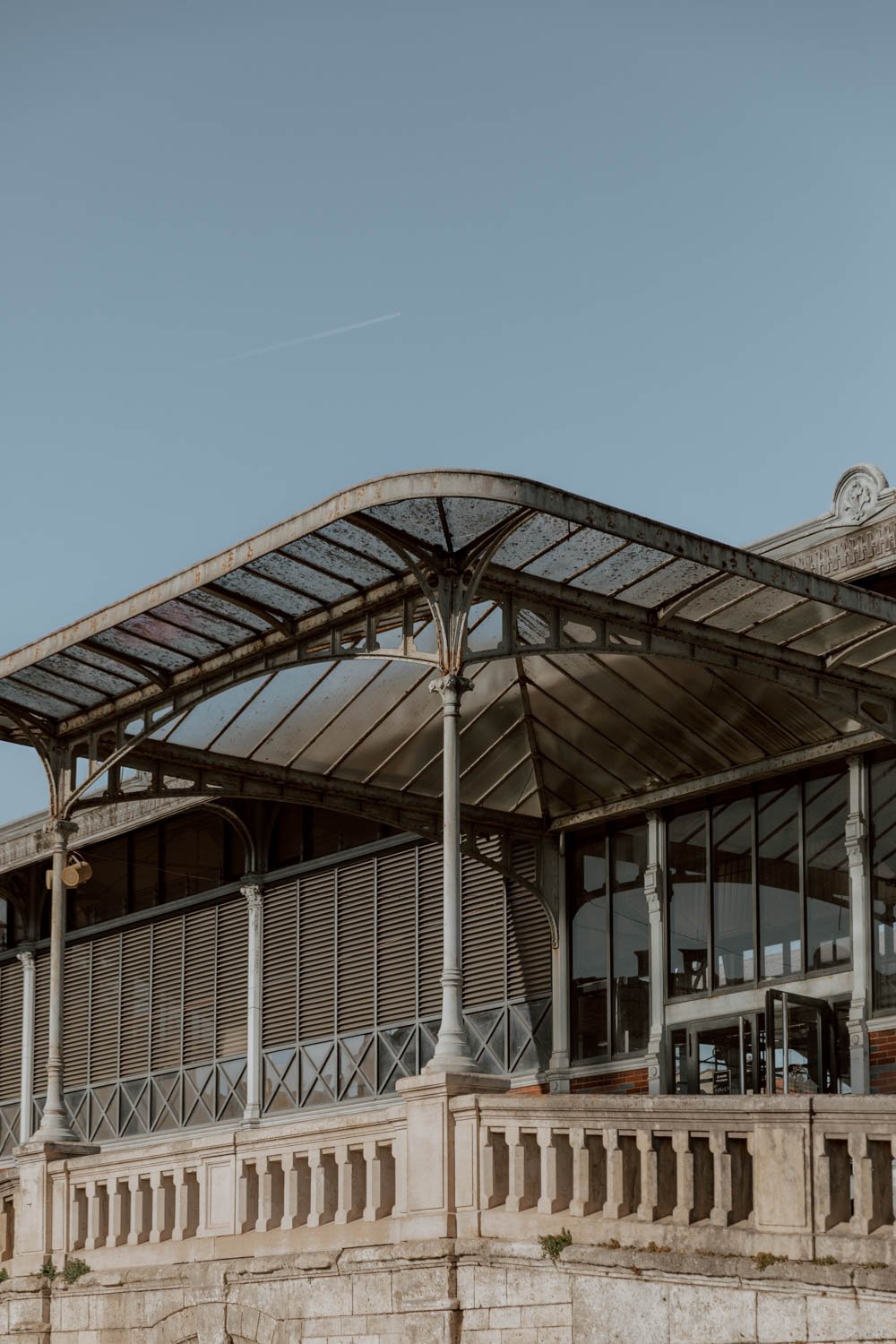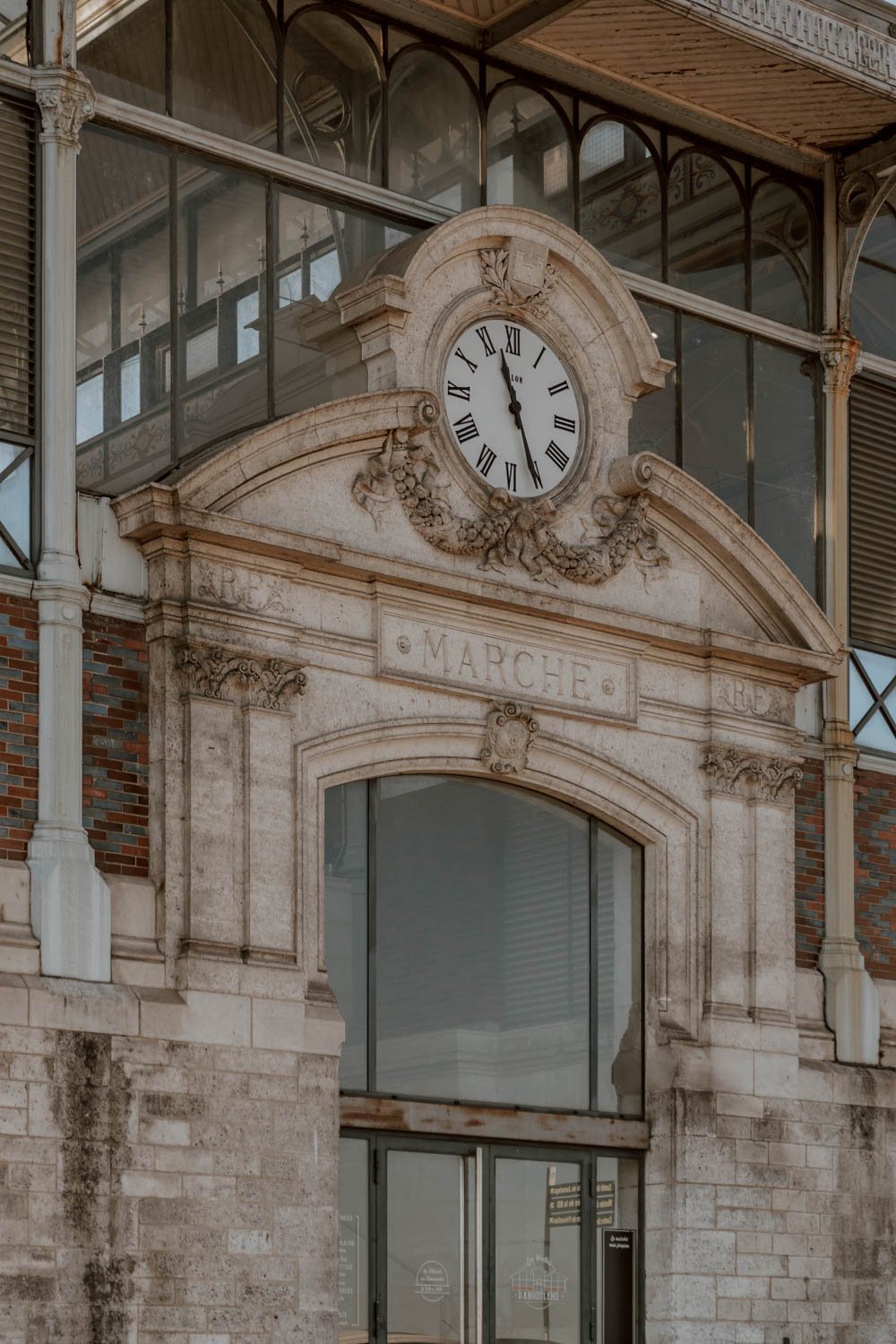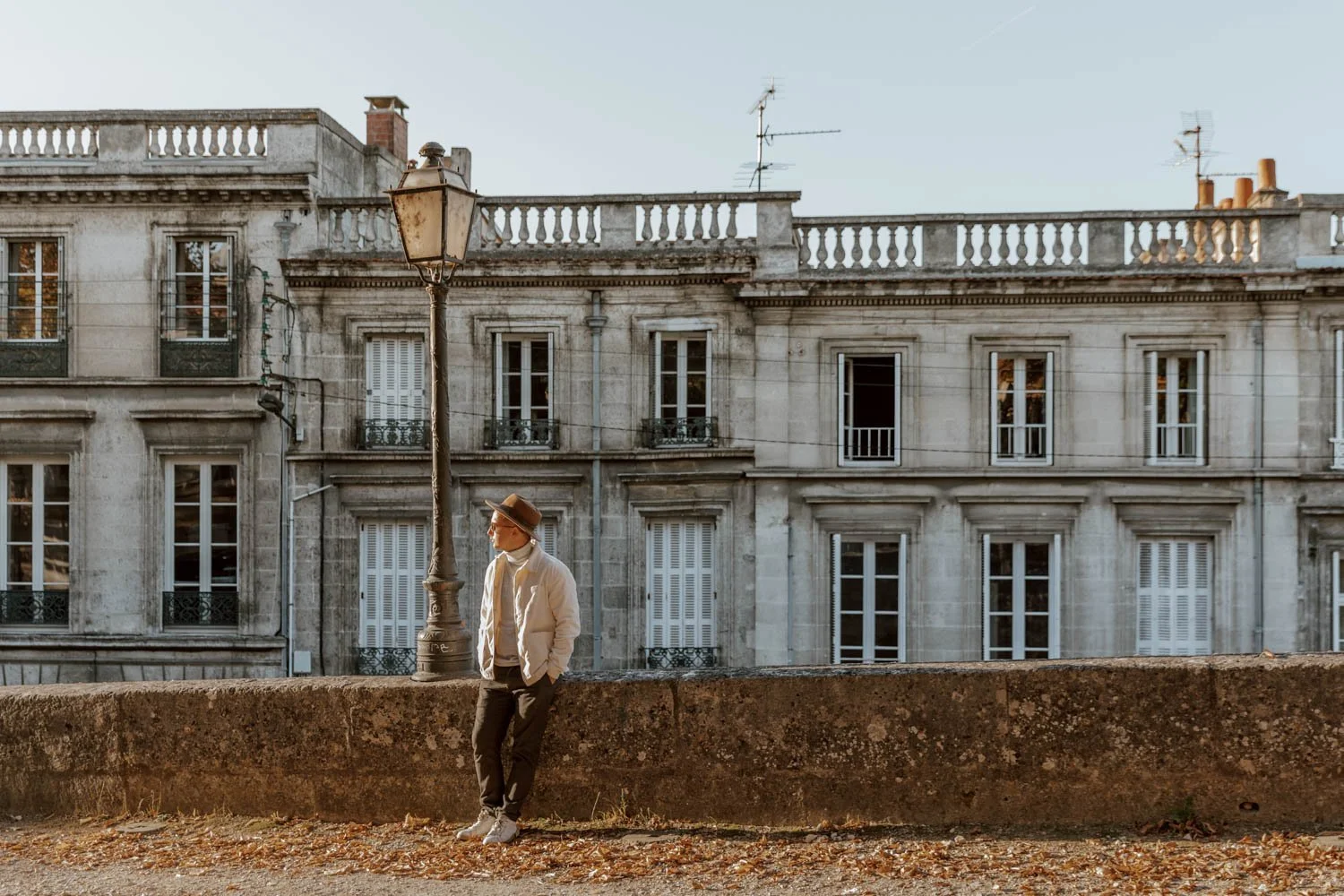“[It has] the right kind of age and architecture . . . and a unique vertical stacking of interesting spaces.”
What ties Asterix to a rolled cigarette?
As with many a good story, it begins on paper.
Down by the Charente, a river born outside a small village near Rochechouart and carried out to the waves of the Atlantic by Rochefort, there once were windmills. Originally used to grind wheat and maize to a fine dust, they were reconfigured in the 16th century to meet a growing hunger for literature, manifestos, bank notes, polemics, and love letters.
With the river providing the fuel to power and pulp, a industry of papermakers grew around Angoulême - the medieval walled-town perched upon a plateau, once held by Romans and fought over by crowns French and English in the Hundred Years War.
As production ramped and paper fortunes were made, the town grew down the steep hillside as the mills gave way to the steel and belching smoke of the industrial revolution. From here in the southwest, the whole of France sourced most of its material to wrap, to write upon, to insouciantly roll its cigarettes.
As a house of cards will collapse though, a pyramid of paper is easily crumpled.
Competition, consolidation, cheaper labour or materials elsewhere - a familiar story in the European decade of discontent - saw over half of the paper factories folded in the 1970s. Economic consequences flowed through the city as surely as the Charente flows toward the Atlantic.
Faced with this downturn, Angoulême needed to start a new chapter.
Fast forward fifty years, and the small city is now the undisputed comic book capital of France: the third-largest comic book festival in the world takes place here each January, for graphic design schools and students it's better than Paris, and there's even a gallery by the river dedicated to the art form and culture of comics.
Streets are named after comic book creators, and streets are signed in comic book speech bubbles.
From this, one may (understandably) assume that one chapter led to the other. That perhaps lots of comic books from the post-WWII boom were printed here? That this city, an hour from Bordeaux and two from La Rochelle, was the birthplace of a famous creator or a character like Tin Tin or Asterix? A big publisher was based here?
None of those are true; the connection is paper-thin.
In this post, we've shared all our favourite things to do in Angoulême, the capital of the Charente département in southwest France and filming location for 'The French Dispatch'. As well as all in the information + inspiration you need to plan your visit and understand how this became the comic book capital of France - and was picked to be Wes Anderson's backdrop for Ennui-Sur-Blasé - we've also got tips on where to stay, where to eat, and transport connections.
This is our definitive travel guide to Angoulême.
Angoulême Street Art & Comic Strips
Walking around Angoulême, you'll find an abundance of street art murals, frescoes, and quirky little pieces down alleyways, just waiting to be discovered. They're in windows, on corners, filling cracks in walls, taking over the whole side of a house or stretching across the second storey above a shop.
CitéCréation, an organisation set up in 1986 to combine art with urban settings in France, are responsible for the most famous or striking of these, with the local government having commissioned 30 works from them over several decades (government or business-mandated street art, rather than grassroots or organic, can be a point of contention amongst fans of the form, but we're not too fussed about it).
The result is that several bland backdrops or nondescript streets around the city centre and outskirts now pop with colour and striking works. Understandably, comic book creators and graphic novel characters feature in a number of these, with a specific aim of the project being to give the sense of the festival's influence continuing throughout the year.
One work which perhaps best sums up what makes Angouleme's approach to making art a part of the fabric, the walls, and the city's storytelling a little different, is the La Fille des Ramparts (The Girl at the Ramparts), a 120-metere mural by Max Cabanes. Here, the old Roman ramparts bleed into the work, with the city becoming part of the art and the art then taking the city into a different imaginative, creative space.
A few of our favourites to head toward are:
UDERZO dans son cosmos (Uderzo in his universe) | A massive new work by François Boucq celebrating the co-creator and illustrator of Astérix & Obélix. Find it here on Google Maps - very close to La Fille des Ramparts!
Memoires du XXeme Ciel (Memories of the 20th Heaven) | In the historic centre, this large mural by Yslaire depicts a tragic couple kissing in a fantasy world of the French Revolution. When there in person, note the shadow being cast upon it in the top right and crane your neck to try and find the source (which is actually part of the work). Find it here.
New-York-Sur-Charente (New-York-On-Charente) | This large scale mural by Nicolas de Crécye pays homage to the surprising historical connection between the city and the big apple (more on that later). Find it here.
Réalité, Sortie de Secours (Reality, Emergency Exit) | On some of our favourite backstreets, this trompe-l'œil six-panel piece by Marc Antoine Matthieu is a real-life black-and-white comic book strip breaking through the walls - find it here on Rue de Beaulieu.
You can see a full list of Angoulême street art, a sightseeing route, and further information on each here. Note that some are quite a walk away from the centre, so won’t perhaps be possible to visit unless you make a specific point of it.
Enjoy Views from The Ramparts
It doesn't take long to appreciate why Angoulême, situated upon a hill overlooking the region, was viewed as a strategically important place throughout history.
Its first city walls were built in Roman times, circa 3rd or 4th century, and encircling fortifications continued to be developed, destroyed, and remodelled as threats evolved through the Middle Ages; Angoulême, as with much of the modern Nouvelle-Aquitaine region, was constantly fought over by the English and French crowns in the 14th century.
Skip forward to the 19th century though, and the ramparts were viewed as more or less redundant, an obstacle to the city's expansion; such a position was common with old city walls at the time - see York in England. Sections were removed or reduced, as Angoulême grew down the hillside into the distinctive 'upper' and 'lower' layers of the city one can see and enjoy today.
Indeed, the modern socio-economic story of the city - constructed and set in stone - with the parts below, beautiful as they are to the English eye, being more recent, cheap and quick to construct blocks. Historically, the posh, the grand, and the important lived up the hill in old Angoulême, whilst the working-class communities grew down in new Angoulême.
The highlife and the low-lives…
For us, this clearly visible divide is the most distinctive part of the small city's aesthetic, and a walk along and around the ramparts helps one understands the evolution of the city as well as bringing you to several fantastic panoramic views of upper & lower Angoulême and into the countryside - the reason it gets the ‘balcony of the southwest’ nickname.
Two personal favourite photo stops are at Statue Carnot (maps), leading on to Rem Desaix, and Rem de l'Est, overlooking Église Notre-Dame d'Obézine (maps). The curiously narrow church which rises from the rooftops, is strikingly beautiful by the way, especially in the morning light, but it's much more modern than one may assume; its pin-sharp sliver of a spire was only completed in 1960.
Good To Know | Today the ramparts of Angoulême are most famous amongst motorsport enthusiasts; every third weekend in September the 'Circuit des Remparts Angouleme' sees classic cars take to the winding roads and streets to race a circuit within the walls first created in 1939.
They were also the place from which 72-year old local man Guillaume Resnier achieved the first record successful flight without an engine 1801, flying 300 metres from them with his own self-propelled contraption and emerging unscathed (save for a broken leg). It was his third attempt.
Go In Search of Wes Anderson
And then there was Wes.
The American director, who has a cultish following (including us) due to the distinctive style, colour palettes, and quirky storytelling of his films, brought his regular troupe of Hollywood stars to Angoulême to film ‘The French Dispatch’ in late 2018.
The movie, in the director's own words, is the blending together of three broad notions: an anthology, the New Yorker magazine, and a French movie.
So why here instead of, say, Paris or Bordeaux?
For his fictional French town of Ennui-sur-Blasé, Anderson wished to create a stylised, idealised version of Paris or France - the Paris or France of the 1950s that each outsider aches to stumble across. He was looking for a place with 'nooks and crannies, corridors, passages, staircases, layers and ramparts' (NY Times article), which could capture the architecture and the sense of old French movies.
And Angoulême was that place.
Of course, it also helped that the city would be cheaper and easier to film in for six months than, say, Montmartre or another Parisian arrondissement.
Serendipitously, our visit to Angoulême took place just a couple of weeks before the cinema release of The French Dispatch, so we were keen to scout out a few filming locations. A common thread of concern of locals when asked for suggestions, was the Anderson had used sets to transform these streets, so there was little point - and that future Wes Anderson fans coming in pilgrimage would only be disappointed that his fictional France is not to be found in the reality.
Upon watching the film though, those are concerns are unfounded: the character and layout of Angoulême’s up-down street layers and the ramparts really does shine through and in the whole construct of Ennui-sur-Blasé. It also continues the theme of the comic book street art, of visual, graphic fiction and reality bleeding into one another to define the story of modern Angoulême.
As fans, we hope that the city can use its imagination to create a lasting testament to the movie here (perhaps a massive French Dispatch street art mural…), whilst permanently displaying some of the props and sets somewhere, which we visited at an exhibition in London last month, would also be a great addition.
In the meantime though, feel free to message us on Instagram (@alongdustyroads) if you’d like to know a few streets to seek out from the film.
The Comic Book Museum & Festival
Although Angoulême was known for its paper and, to a far lesser extent, printing, it didn't really have anything to do directly with comics.
So, how did the city of paper in centuries past come to be known today as the comic book capital of France?
Chance, then intent.
In 1974, only two years after the large cigarette paper factory shut down, a group of three friends organised an exhibition to bring together others who shared their passion for comic books. It grew in popularity and influence each year, evolving into an four-day Festival International de la Bande Dessinée d’Angoulême, the second-largest in Europe (after Lucca in Italy) and the third-largest in the world.
If you think of Cannes for film, then for comics it's Angoulême.
Now, before moving on, it's important to put a pin in what we mean by 'comics'. One half of Along Dusty Roads grew up on a diet of the Beano, Dandy, Oor Wullie, with a smattering of Asterix & Obelisk, but neither of us are into them these days or can claim to have understood just how popular and respected they are as an art form, as well as form of entertainment, before visiting the city.
Comics, cartoons, and graphic novels are serious art, taken seriously in France. Annual revenues associated with the industry in just France & Belgium surpassed €500 million in 2018, and over 200,000 people join the festival each January.
To put it into context, Angoulême's population is just a smidge over 40,000.
Of course, not everyone planning a visit to Angoulême is coinciding it with the BD Festival* - or may even care about comics! But, learning about the '9th art' forms a big part of any visit to the city where the bloody street signs were all changed to speech bubbles in 1997! Spurred on by the success of the festival, the city sought to consolidate and augment the Angoulême’s reputation as France’s epicentre for graphic arts with the opening of several specialist schools, cultural centres, and over 30 animation studios being established.
That’s why it’s the unrivalled cartoon capital of Europe.
Foremost amongst these developments for visitors is La Cité Internationale de la Bande Dessinée et de l'Image (maps). Down the hill and across the river, and better known as the Comic Book Museum & Library, it will appeal across the board to young, old, fans, and newbies. It has over 8,000 pieces, permanent and temporary exhibitions (one on Picasso’s love of the form when we were there), interactive bits for kids, and even an artist-in-residence on occasion too. You won’t need much more than an hour for a visit, and heading down the hill to the complex is also the best way to take yourself out of the nooks and crannies of the hilltop historical centre. There’s also a pretty excellent gift shop attached, something which we unfortunately didn't have too much time to linger within (although this was a boon for our bank balance and suitcase weight we imagine).
The Details | Entry is €10 for adults, €5 for discounted categories, and free for under 18s. Open 10 am - 6 pm Tuesday to Saturday (until 7 pm in July & August), 2 pm - 6 pm on Sundays, closed Mondays. Find it here on Google Maps; note that it’s a good 10-15 minute walk downhill from the historical centre (and then you have to go back up).
La bibliothèque de la bande dessinée, the largest library of its kind in the world with 43,000 editions, is in the glass building across the river. Find out more about the whole cultural complex, and buy tickets in advance, here.
*bande dessinée, often abbreviated to BD, is French for comics.
Explore The Historical Centre
Angoulême is pretty compact, meaning you don’t need to jump in a bus or a taxi to visit most of it over the course of a day or two. The most charming little streets and pockets are to be found in the hilltop historical centre, and it’s honestly best to just follow your nose and get lost.
Take a left instead of a right, stop to people watch from a random cafe, browse in little boutiques, go under the #13 on Rue des 3 Notre Dame to see where you emerge.
The Hotel du Ville (here), a mish-mash of architectural periods, is a good start and end-point your morning or afternoon as a flaneur in Anouglême. Once the main castle of Kings, Counts, and Dukes, a big chunk of it was demolished when it was sold to the city in the 19th century, which gives it the air of both a fortfied castle and grand chateau. A sometime exhibition space as well as the home of local government, it also houses the city's tourism office, in case you want some paper maps, tours, or more ideas on things to do in Angoulême.
Good To Know | As should be expected in a small city of students and artists, there’s a pretty good nightlife in Angoulême; if the more sedate, romantic Dordogne villages and countryside are becoming a little too tranquil, then scratch an itch by coming here.
We only had one night, so our knowledge of which bars to go to specifically is based only on personal experience, but in and around the narrow, intertwining backstreets of Rue de la Cloche Verte, Rue Massillon, and Rue Ludovic Trarieux is a good bet for pavement bars and the after-dinner crowd.
We liked La Girafe (maps) and its excellent range of beers if you want somewhere to stop at for a break in the late afternoon. It’s also got a nice little independent shop of artisans next door.
Visit The Cathedral & The Musée d'Angoulême
The building which underlines just how ancient this city upon a hill is the Cathédrale Saint-Pierre d'Angoulême, which was first built in the 1100s.
Replacing a smaller one which citizens felt was too small to adequately reflect the wealth of the area, its Romanesque-Byzantine facade is adorned with 70 sculptures charting the Ascension and The Last Judgement. This aspect is is really the main point of interest for visitors as the interiors are modest in contrast to some of the opulent, golden fashions of other European cathedrals.
It's absolutely worth stopping by though, especially if you’re able to visit the ‘treasures’ art installation (unfortunately shut when we were in town).
A 2-minute walk away, you'll find the Musée d'Angoulême (maps). Set within the grand trappings of the the wings of the Bishop's former residence, it began with a donation of 10 paintings from a local collector and is developed into quite a curiosity shop of a collection. The Casque d'Agris, a ceremonial helmet from 500 BC, is one of its most prized objects in a quite diverse curiosity shop collection which spans artfefacts of Charente to art and artefacts from Africa, Asia, Oceania, and the Americas.
The museum is open Tuesday - Sunday (10 am - 2.30 pm, then 1.45 - 6 pm) and closed Mondays.
Good To Know | All pub quiz fans know that New York was originally called New Amsterdam right? Well, now you can outdo everyone else in your team with this little nugget. The Italian explorer Giovanni da Verrazzano, sailing in 1524 under the patronage of King Francis I of France, came across the bay several decades before the Dutch East India Company and Henry Hudson in 1625, and he christened it 'Nouvelle-Angoulême' (New Angoulême)!
Find out more about this story, and the French / Italian origins of New York, in this article.
Eats & Treats In Angoulême Covered Market
Built in 1886 on the site of an old garrison and prison, the iron and glass structure was modelled the style of the original Les Halles in Paris (which is now just a big modern shopping centre) and Pavillon Baltard. There was sensitive restoration work done in 2000 to modernise the inside, but thankfully much of the core features and structure remained true to their original design.
Aside from architectural interest, the covered market is home to a cornucopia of local produce, alongside florists, vintners, and a handful of restaurants and wine bars, so it's a good place to stop for lunch or a browse.
You can find the covered market by the ramparts on Place des Halles (maps). Across the road, the Bar des Arceaux is often home to a clientele who could be plucked from French central casting.
Good To Know | A few personal recommendations on where to eat in Angoulême are the trendy yet traditional La Cour for lunch or dinner, whilst Oh My Juice is a fantastic option if you want a fresh juice hit or looking for a quick, healthy, veggie-friendly lunch. Le River 102 (maps), a cool wine and tapas place, was really popular with locals when we passed it on the way to the BD Museum.
For artisan chocolate, stop by Chocolatier DUCEAU (maps).
A Day Trip to Cognac
Although day trips to Angoulême are more common than day trips from it, it would be remiss of us not to let you know that the the beautiful region which gives name to the specific brandy drink, grown and produced there, is within easy reach of the city.
A 45-minute direct train ride away, and just under an hour's drive away, the vineyards of Cognac are beautiful in summer or early autumn, and it's easy to join a tasting tour or visit distillers in and around the town.
A few options to consider can be found here.
Good To Know | I promise we won't talk about paper in this article again (and that no David Brent references will be made in this section).
The Musée du Papier - Le Nil is however the place to go though if you would like to know more about the trade that made Angoulême wealthy. As the rhthym goes in a continent where things were once made but now no longer are, the post-industrial age has seen several of these factories and spaces converted into cultural venues. This museum is housed in the old factory of Joseph Bardou & Fils, famous for making its Le Nil cigarette papers, before it all went up in (metaphorical) smoke in 1972.
Fatefully, this was two years before the first Comic Book event.
Find out tickets + times here. Alternatively, drive out to Le Moulin du Verger to see a restored artisanal paper mill from the 16th century which is still producing.
Where to Stay in Angoulême
For accommodation in Angoulême, the two points to note are that it’s better to stay in the centre, than by the railway station and that prices rocket for the Comic Book Festival in January, as well as the Circuit des Remparts held in September.
If visiting for either of these festivals, availability becomes very limited so you do need to book as far in advance as possible. A local also told us that the amount of Airbnbs in the small city explode in numbers for January, so bear in mind that quality may vary quite a lot.
Hotels & Guesthouses
Hotel Le Saint Gelais | If you’re looking for Angoulême’s plushest accommodation offering, where better than the hotel chosen by Wes Anderson’s movie star cast? Located in a grand Palais, it has undergone a contemporary refurb without losing its historical beauty. The gardens and pool area are really quite beautiful. Find out more here.
Le Twelve | Beautifully stylish guesthouse along the ramparts. Having just 12 rooms allows a personal feel, with a highly rated host. Rooms are large, bright and contemporary with clean lines. Private garden and terrace for guests. Find out more here.
Hôtel du Palais | This slightly unusual hotel (strong Wes Anderson vibes in certain rooms and communal areas) is where we stayed. It had an excellent location, and although rooms were a tad basic they are very well priced. Find out more here.
We’re never the biggest fans of large corporate hotels, but the Mercure Hotel here is has good reviews and is a safe bet for decent accommodation.
Airbnbs & Apartments
Rempart de Beaulieu | A beautiful apartment in the centre of the old town, this two-bedroom Airbnb is beautifully decorated, has hard wood floors throughout, lots of light and even a private terrace. Find out more here.
Charming renovated house with views | A little outside the old town (which explains why it’s such good value), this two bedroom apartment has exceptional reviews, is furnished to a high standard throughout and comes with a really great garden / terrace area. Find out more here.
Large terrace apartment | Located just below the ramparts, this good value, modern one bed apartment is ideal for a couple who crave a little more space - it has a huge terrace with table. Find out more here.
The modern, mezzanine apartment ‘Les balcons de l’Arsenal’ is also ideal for a couple.
Central apartment with sunny terrace | Lovely, light and bright, this excellent one bedroom apartment is located in the heart of Angoulême. Traditional French property but with a modern refurb. Also has small balcony for those early morning coffees! Find out more here.
How To Get To Angoulême, France
// ANGOULÊME BY TRAIN
Angoulême is served by the TGV and the LGV Atlantique train lines, with Paris (1 hour 40 mins), and Bordeaux (35 minutes). The coastal city of La Rochelle is 2.5 hours away.
The small station (maps) is a 5-10 minute walk from most places you'll need in the historical centre.
// ANGOULÊME BY CAR
Typical driving time from nearby popular destinations are:
Cognac | 1 hour
La Rochelle | 2 hours
Dordogne Valley | 2.5 hours
If arriving with a rental car from elsewhere in Nouvelle-Aquitaine, note that on-street parking is limited in the historical centre. We recommend checking in advance with your accommodation, if parking isn't included, for their recommendation. Parking Les Halls (maps) is cheap and central.
// ANGOULÊME BY AIR
Aéroport d’Angoulême-Cognac is for private planes only.
If flying in from outside France, consider Aéroport de Poitiers-Biard, Bergerac Dordogne Périgord Airport, Périgueux Bassillac Airport, or Bordeaux, and the connecting with public transport or a rental car.


